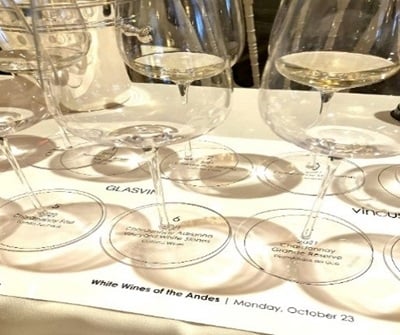
Owing to Andean Altitude, Liquor with Attitude
Surprisingly, compared to variables like terroir, wind, and snowfall, they are often given less fame on winegrowers ‘ goal lists. However, as a result of global warming, wineries are now considering hills and mountains when deciding where to plant vines in vineyards.
Mountain High
A sizable mountain range known as the Andes Cordillera runs the entire length of South America’s northern coast. From Colombia in the north to Tierra del Fuego, the southernmost tip of the globe, it stretches more than 4, 000 km through Ecuador, Peru, Bolivia, and Argentina. This mountain collection is a notable physical function in the area because it is both the longest and highest collection outside of the Himalayas.
In South America, especially in nations like Argentina and Chile, the Andes Cordillera has a significant impact on liquor production. The Andes Cordillera and wines are related in the following way:
1. Altitude: The Andes mountains offer a range of altitudes, ranging from sea level to more than 6, 900 meters ( approximately 22, 637 feet ). Due to the wide range of altitudes, different microclimates are produced that are suitable for fruit cultivation. Higher levels, in particular, are growing in popularity for grapes due to their cooler heat, which aid in maintaining grape acidity and accelerating the ripening process. This results in the creation of premium beverages with a moderate acidity.
2. Climate: Because the Alps serve as a normal barrier to weather designs, the wine regions along their hills experience special weather conditions. By providing cooler nights and lighter nighttime temperatures, which are beneficial for wine ripening, the mountains help regulate temperature. Beverages with better stability and complexity are the result of this weather moderation.
3. 3. For millions of people in South America, the Andes Mountains are a crucial supply of water. This means that access to water for irrigation is easily accessible for the liquor industry, even in dry and semi-dry areas. As water is essential for grapevine growth and wine quality, this is necessary for vineyard conservation.
4. Terroir: The Andes region’s different soils and altitudes are a part of the concept of terreoir, which includes the special ecological elements that affect the characteristics of wine. The taste and quality of the grapes and, accordingly, the wines, are influenced by the different soil types found in the Andes, including alluvial, shallow, clay, gravel, and limestone.
5. 5. Wine Quality: The Andes Cordillera is a great place to produce high-quality wines because of its high level grapes, diverse microclimate, and distinctive terroirs. Thanks in part to their grapes located in the darkness of the Andes, the quality and reputation of their vineyards have increased in both Argentina and Chile.
In My View
The following beverages caught my attention at a new White Wines of the Andes event in New York City, hosted by Joaquin Hidalgo:
1. Chardonnay Amelia, Concha y Toro, 2021. Chile’s northwestern region
The Amelia brand, which was founded in 1993 in honor of all the women who have crossed the line ( think of Jane Goodall and Amy Earhart ), was given its name in memory of Marcel Papa’s wife. The second Ultra-Premium Chardonnay was produced in Chile.
On the north bank of the Limari River, 22 km from the Pacific Ocean, is the Quebrada Seca Vineyard. The garden was built on clay grounds that are rich in calcium carbonate at a height of 190 meters above sea level. The fruit ripens gradually, producing new wines, due to the cold temperatures and hazy mornings.
Fruits are hand-harvestable and chosen using a conveyor belt that automatically transports entire clusters to the media. In French wood containers, fermentation takes place, and adult fermentation lasts for 8 weeks. French oak barrels ( 10 % new and 90 % used ) are used to age wine for 12 months. Consumed at your best within the following 8 times.
Documents
The crystals look contrasts with its intricate and multi-layered bouquet because it appears clean and bright light yellow to the eyesight. It combines the structure of red clay ( provides body ) with the minerality of the limestone soil ( provids backbone ) and is intricate and layered to the nose with scents of white flowers, pears, and minerals. Long, angry, and refreshing with a long finish that is accentuated by lovely acidity.
2.2. Tabali, 2022 Sauvignon Blanc Talinay
Chile’s Talinay Sauvignon Blanc, which is strong and elegant in 2022, is a wonderful light. To maintain the variety beauty, the impact of the marble soils, and the closeness to the sea, it is always bottled unoaked. It has amazing parameters, such as a pH of 2.96 and an acidity of 8.38 ounces, and 13 % beer. The wines are made from vines that were planted in Talinay in 2006, a region with more limestone-rich soils and stronger water influences.
Records.
The wine has an beautifully clear and shiny look and emits an aroma that is as crisp and energizing as a spring breeze. The aroma of lush green vegetation, slippery rocks, and an earthy, energizing perfume delights the nose. The palate is treated to an entrancing visual tapestry of flowering notes mixed with delicate hints of citrus fruit and sea salt.
Radiant acidity, which infuses the entire mouth with an energizing freshness, enhances the wine journey. The taste buds are stimulated with each swallow, and this energizing experience lasts for a very long time.
Dr. ElinorGarely Without the author’s written consent, this trademark content, including the photos, may not be reproduced.
Wines with Attitude, Kudos to Andean Altitude
